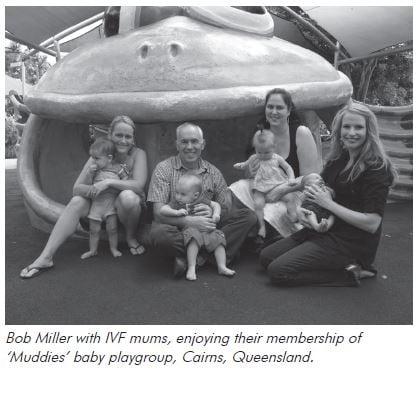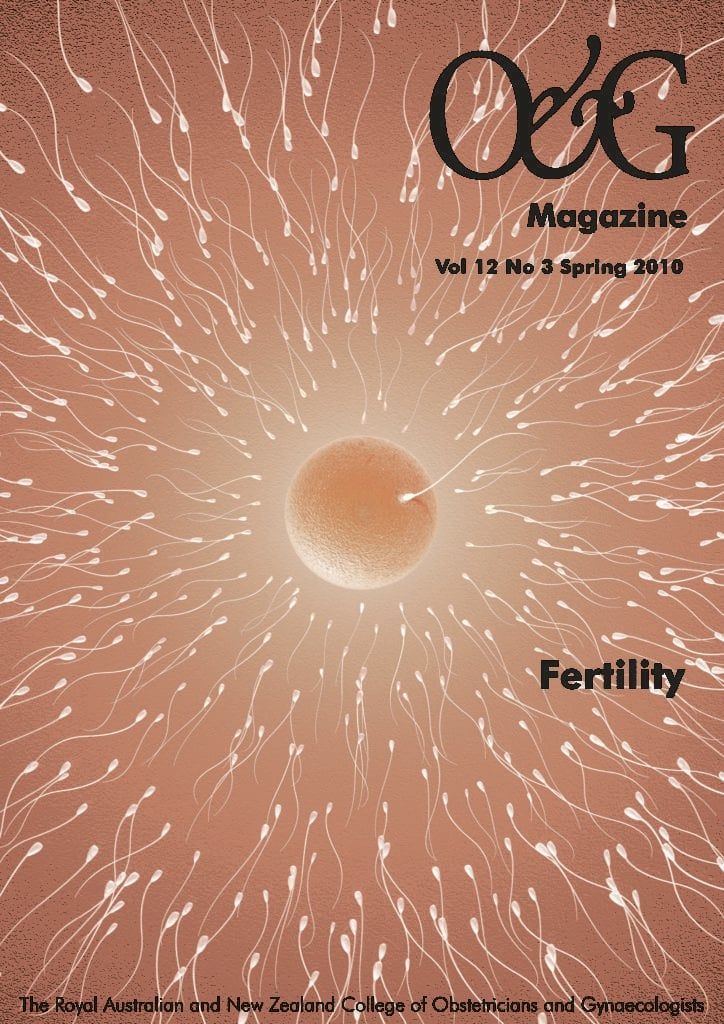Australia is a vast continent. There are three regional hospitals with a wide range of specialist referral services across north and north eastern Australia: Darwin, Cairns and Townsville.
Smaller regional hospitals and Outreach clinics, provided by those Base Hospitals, in conjunction with the Royal Flying Doctor Service, seek to fill in the gaps. Obviously, such clinics have to prioritise and triage their care. understandably, infertility advice and treatment comes low on that list. Also, the vagaries and variability of a woman’s menstrual cycle seem to rarely correspond with a scheduled fly-in fly-out clinic.
So much of infertility care and monitoring revolves around flexible visits, specialised laboratory procedures and ready access to pelvic ultrasound monitoring, both for diagnosis and treament. For example, same day gonadotrophin assays. Patients need ready access to a ‘helpline’ with a nurse coordinator.
Infertility is not really a one-stop visit, although couples often have that expectation, especially when just to get to Cairns is a four to 12-hour round trip or a plane flight away. The cyclone and wet season can derail the best laid plans!
It takes two to tango. The partner may not be able to attend, at least the first visit, and certainly would rather be somewhere else. Society still tends to think infertility is the woman’s problem and there is no shortage of this sentiment in the ‘men of the bush’, whereas we know that five per cent of men have sub-optimal sperm (Laureate Professor John Aitken, the university of Newcastle). Also, the men have their fair share of lifestyle problems and don’t always take kindly to advice in regard to changing their ways.
Getting the man organised for a formal seminal analysis and basic screening can be a challenge. Those with busy lifestyles may be crewing a prawn boat in the Gulf, running cattle stations, teaching or policing up the Cape, in the navy, or fly-in fly-out miners on a ten-day out-four-day home roster. In fact, constantly absent partners may be a relevant infertility factor, I think!
While ovulation induction with low-dose clomiphene is relatively straightforward and can be managed at a distance for a few cycles, coordinating and monitoring for timed intrauterine insemination is a different kettle of fish. The partner is often trying to juggle staying at work as long as possible, while having to be ready to drop everything and rush to Cairns in order to play his part.
One has to be careful that couples don’t drop out of view and continue with self-monitored repeat scripts of clomiphene, or get put off by negative and fragmented care. They need to be given a clear ‘road map’ and timetable of how their management will progress if there is no quick result. That plan should include the important place assisted reproduction has in helping to achieve a result.
Ovulation induction with gonadotrophins is fraught with difficulties. Even with the low-dose step-up regime, high order pregnancy is a concern and the treatment length is unpredictable. It can tend to drag on, to everybody’s frustration, with the woman ‘camped ‘in Cairns, while her partner works at home on ‘stand-by’.
Quite honestly, I think the best option for many couples in such situations is to opt for in vitro fertilisation (IVF), as they can plan ahead, arrange their affairs around a fairly fixed set of dates, and a single embryo can be transferred. ‘Bushies’ tend to be more resourceful and accepting of the tyranny of distance.
However, like their compatriots in the city, when trying to conceive, they tend to leave it too long and too late. Also, their management tends to be more spread out over time due to their and their partner’s dislocation.
I’m afraid, we now have a generation of women who have had the benefit of such effective contraception that they have ‘mis(sed)’conception. Society’s idea of planning for a family seems to be to start trying at age 32 to 38. This is a recipe for disappointment and leads to failure to fulfil their desires for the hoped for number of children to complete their family unit, even when successful the first time. We need to redouble our efforts to explain the benefits of experiencing chilbirth in the ‘twenties’. Many infertility problems would then just fade away.
Another product of modern society is the ‘post vasectomy’, ‘I’m ready to go again, Doc’ phenomenon. Often the man is in his fifties and is showing the effects of a few decades of poor lifestyle. Occasionally, they are quite young men who haven’t even experienced fatherhood yet. Maybe the bush attracts such types, I don’t know. It seems that all the safeguards built into the informed consent process required for female sterilisation go out of the window where men are concerned.
Patients can be left ‘in limbo’, losing precious time, when measures short of assisted reproduction fail. While assisted reproduction technology is the last option, it is the ‘end game’. Take-up of this resource is limited by logistical and financial considerations. From where I sit in Far North Queensland, I know that a lot of rural women are in need of such treatment, are not aware that they would benefit from such treatment and/or are not being given the opportunity or help with facilitating access to such treatment.
Also, myths continue, even in medical circles, as to the actual ‘out of pocket’ costs in regard to IVF cycles. Informed financial consent is readily available if patients are encouraged to make direct contact.
The Australian bush contains a cross-section of society. If Australia has a two-tier economy, this is also seen in the bush. There are those in well-paid jobs, those that are struggling to stay comfortable, and many disadvantaged groups. A lot of people are missing out.
All units carry out some ‘pro bono’ work for disadvantaged patients. For example, Queensland Fertility Group (QFG) has done ‘pre-chemo’ sperm freezes for years, and more latterly, egg freezing and other fertility preservation options, again pre-cancer treatment. The recent passing of legislation allowing surrogacy is a new challenge, mainly explaining to those that haven’t yet accepted closure why it doesn’t apply to them!
QFG also now dedicates about 30 IVF-stimulated cycles a year to disadvantaged people. Of course, this is a drop in the ocean compared to potential demand. However, running such units is very expensive. For example, our small unit in Cairns costs approximately A$10,000 a week, especially as we don’t have the economy of scale of the bigger units.
I guess a public-private facility is the best option, but there is no sign of such an arrangement in Queensland in the foreseeable future. The next option is for a certain number of cases to be contracted out to the private sector, as in the Surgery Connect program. Again, there are much higher priorities than this for Queensland Health.
An observation, based on experience from working in both the public and private sectors, is that a co-payment quickly sorts out those with the right intent and attitude. One cannot organise a stimulated cycle in a safe and successful manner if the patient is not compliant with treatment.
Nor can the patient be ‘lost’ to the bush post egg pick-up and embryo transfer. Most complications arise then: ovarian hyperstimulation syndrome (OHSS); the risk of deep vein thrombosis; pelvic infection; and complications of early pregnancy, including ectopic pregnancy. Those pesky embryos can drift anywhere before they implant! I have even had to remove a cornual ectopic after a previous total salpingectomy. This was a heterotopic pregnancy and the intrauterine pregnancy continued.
Single embryo transfer is obviously safer for the isolated patient for all stages of pregnancy. Contact must be maintained during this time by the treating unit and this applies to capital city units that often treat patients from all points north and west.
‘Bushies’ can be very stoical. They may shrug off early symptoms of complications. Some women will even hide their symptoms if they can, as they want it to succeed. The unit must have someone prepared to talk to concerned regional medical staff at any time, to help triage. OHSS patients should be transferred to a major centre. It is a condition that has too many idiosyncracies. Thankfully, the more recent antagonist protocols and trend to lower gonadotrophin dosage, have served to reduce the incidence and severity of this condition, but can’t claim to have eliminated this dreaded complication.
While assisted reproduction is expensive care, there are novel ideas for cheap, effective treatment in the developing world, such as intra-vaginal incubators. However, I can’t see this being practical in Australia, where we have to conform to strict guidelines and quality assurance. Incidentally, complying with paperwork, such as the latest ISO standard in Australia, is a significant on-cost to ART-accredited clinics – a necessary evil.
Outreach clinics can only do so much and the health dollar can only be stretched, and has been, so far. May I suggest that the referral process could be streamlined somewhat. The satellite clinic does the initial assessment. The details are passed onto the base hospital team, that includes a dedicated subspecialty clinic, clinician, registrar and nurse coordinator. All the appointments and necessary investigations are set up, including laparoscopy and hysteroscopy if indicated, so that when the couple come to town, they are done in an efficient and timely manner, the results reviewed, and further management discussed and planned. By the time the couple return home, they have clear timelines as to how their management will unfold, if the initial lines of treatment are unsuccessful.
Good fertility care can be cost-effective for a nation that needs youngsters to look after us ageing ob/gynae baby boomers! The women of ‘the bush’ need the same chance and opportunity to access the full range of reproductive care as urban and urbane women.







Leave a Reply